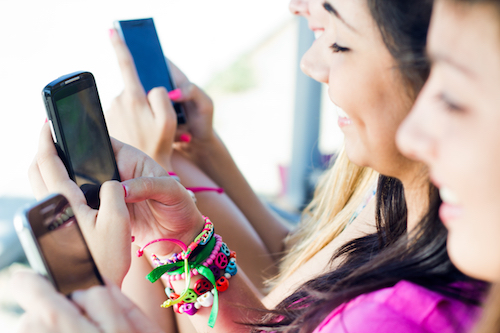TIPS FOR REDUCING WIRELESS RADIATION
Cell Phones and Cordless Phones

Cell phones and cordless landline phones emit significant amounts of wireless radiation (a.k.a. radio frequency radiation and microwave radiation). These steps can help reduce your exposure to unhealthy EMF radiation from these devices.
Most Important
As much as possible, use a corded landline phone rather than a cell phone or cordless landline for making telephone calls, especially calls that will last more than a few minutes.
When selecting a corded landline phone, opt for a model that runs on batteries rather than AC power if possible. This will help reduce your exposure to the electric and magnetic fields emitted by AC powered phones. Also choose a model that has a speaker function and/or a jack for an air tube headset. (Even with corded phones, it’s best not to hold the receiver to your head for long periods of time. Instead, use the phone in speaker mode or with an air tube headset if one is available for you particular phone.)
When you want or need to use a CELL PHONE….
- Keep calls short and use the phones speaker function or an air tube headset/earbuds when talking. Never hold a cell phone directly against your ear/head.
- Text rather than talk whenever possible.
- Do NOT carry your cell phone in a pocket, bra, headscarf, sock, or anywhere else next to your body. It is better to carry the phone in a purse or briefcase, and to turn it off or place it in airplane mode when you are not actively using it.
- Consider purchasing an EMF shielding device for your cell phone. These devices typically take the form of a specialized case and can help block radiation emitted by the phone. (NOTE: If you do get one of these shielding devices, it’s a good idea to test its effectiveness with an RF meter. Don’t simply assume it works as advertised.)
- Avoid making cell phone calls in locations with weak cell reception, for example: remote areas and inside cars, buses, trains, and elevators. The weaker the reception, the harder your phone typically has to work to find a signal. The harder your phone has to work, the more powerful the radiation it emits. (NOTE: You can assess the quality of reception in a location by the number of bars showing on your phone. The more bars showing, the better the reception, and vice versa.)
- Create ways to connect your cell phone to wired Internet (i.e., via Ethernet cord) when you want to stream videos, browse the web, etc. For example, with an iPhone, you can accomplish this with a thunderbolt to gigabit Ethernet adapter or a combination of the following Apple adapters and cords if you want to access AC power and wired Internet at the same time: a lightening to USB 3 camera adapter, a USB to Ethernet adapter, a lightening to USB cable, and a USB power adapter. It is also a good idea to use a shielded Ethernet cord for connecting to the Internet.
- When selecting a cell phone, choose a low radiation model, i.e., a phone with a low Specific Absorption Rate (SAR).
- Stop using your cell phone at least 1 hour before bedtime whenever possible. The blue light emitted by cell phones and other screens can delay the release of melatonin, making it difficult to sleep. When you do use your cell phone at night, especially for surfing the web, streaming videos, etc., consider wearing blue light blocking glasses.
When you want or need to use a CORDLESS LANDLINE PHONE…
- Keep the phone’s base station as far as possible from places where you or family members spend significant time. For example, do NOT keep the base station near sleeping areas or on your desk.
- Keep conversations short and use the speaker function or an air tube headset/earbuds (if available) when talking. Don’t hold the handset directly against your ear/head.
- At night, unplug the phone’s base station from the electrical outlet and keep the handset(s) as far as possible from rooms where you and family members are sleeping.
